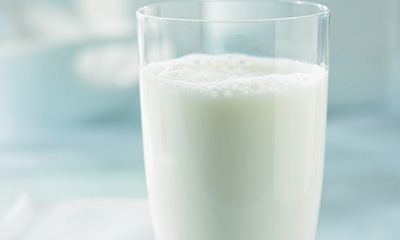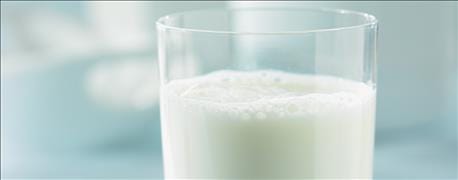March 29, 2016

Depending on how you look at it, Ohio either has too much milk, or not enough. Last year, Ohio dairy farmers produced 5.49 billion pounds of milk, but consumption of milk and dairy products in Ohio exceeded the state’s milk production by about 1.5 billion pounds.
To meet the demand, milk is brought in from other states. On the other hand, an oversupply of milk in the Mideast Marketing Area has contributed to low milk prices, which are stressing many Ohio dairy farms.
“We’re swimming in milk right now,” notes John Douglass, an Ohio Dairy Producers Association board member, who operates two dairy farms in Wayne County and one in Kentucky with his family.

Ohio dairy perseveres despite swimming in milk
Part of the problem is that the supply of milk in the Mideast Marketing Area has surpassed the area’s processing capacity, he notes. In Ohio, production has been staying about the same from year to year, but last year Michigan’s production grew by about 9%, and some of that additional milk is flowing into Ohio processing plants.
Milk prices for each of the nation’s multi-state marketing areas are determined by USDA based on the supply and demand within the marketing area. However, Douglass says, in recent years more producers are using futures contracts to sell milk, which may affect how quickly the market reacts to changes in supply and demand.
Ohio milk prices through 2015 and the first few months of 2016 have been well below $20 per cwt. The USDA’s Statistical Uniform Price for the Mideast Marketing Area averaged $16.23 for 2015. In comparison, the 2014 average was $23.16 per cwt. Wide price swings are not unusual in the dairy business.
Prices go through high and low cycles, explains Earl Stitzlein, who farms near Loudenville. “We’re down in the valley right now, but we’re resilient.”
Stitzlein, who is the chairman of the American Dairy Association (ADA) Mideast board of directors, says one of the strengths of Ohio’s dairy industry is the number and variety of processors in the state. In addition to fluid milk processors, the state has processors that specialize in cheese, yogurt, sour cream and ice cream. Ohio ranks first in the nation in Swiss cheese production, second in production of low-fat cottage cheese and third in production of sour cream.
Global impact
World demand is also affecting current milk prices for Ohio farmers and other dairy producers around the country. Scott Higgins, the president and CEO of the ADA Mideast, explains that about 14% of the dairy products produced in the U.S. last year were exported compared to 17% in 2014. The change reflects increasing dairy production around the world and China’s current economic situation. To maintain world markets, the dairy industry is working to remain a provider of choice, Higgins adds.
A huge milk surplus in the mid-1980s led the industry to establish a nationwide checkoff program to help promote dairy products. For each 100 pounds of milk sold, dairy farmers contribute 15 cents to the checkoff. For Ohio producers, 5 cents of the 15-cent checkoff goes to the National Dairy Board to help pay for national programs, including export promotions and research projects. The other 10 cents is used by ADA Mideast to fund local programs.
Checkoff-funded programs have helped build demand for dairy products, particularly cheese, notes Higgins. “Cheese has really been a driver.” For instance, a partnership with Domino’s Pizza increased the amount of cheese on the chain’s pizza by 40%. Another partnership with McDonald’s helped establish milk as the default beverage in kid’s meals. ADA Mideast is also working with the Ohio High School Athletic Association to promote milk among young athletes.
~~~PAGE_BREAK_HERE~~~
Rules and regulations
In addition to the ongoing challenge of balancing milk supply and demand, many Ohio dairy farmers are dealing with new requirements for manure management. The larger dairies classified as concentrated animal feeding operations were required to include manure storage and management plans as part of the permitting process. However, some smaller producers are now struggling to add manure storage to meet nutrient management requirements, notes Higgins, who is also CEO of the Ohio Dairy Producers Association (ODPA).
The dairy industry is determined to be part of the solution to water quality concerns, but in some cases adding manure storage facilities can cost producers $500 to $1,000 per cow, says Higgins.
That investment may be unaffordable for some producers. One possible solution might be an income tax credit for manure handling equipment, he adds. State Rep. Brian Hill recently introduced a bill that would create such a tax credit, House Bill 297.
Environmental regulations are not the only new rules farmers are dealing with. Some milk processors are requiring farmers to meet and document specific production practices. The requirements go beyond food safety and sanitation precautions, explains Lou Brown, a member of the ODPA board of directors and a farmer in Auglaize County.
Brown markets his milk through a co-op that supplies a nearby Dannon yogurt plant. The yogurt company is starting a third-party audit to check production practices related to cow comfort. “It’s what consumers are asking for,” he notes. “What can we do but try to co-operate?”
The audits will consider a variety of factors, such as tail docking, the number of cows per water space and even how icy cow floors are managed. Farmers will also be required to have written protocols for various tasks, such as treatment of sick animals, helping with calving, downer cow handling and euthanasia. “Instead of having it upstairs in your brain, you have to have it all written down,” Brown says.
Large and small
The number of cows being milked in Ohio hasn’t changed much over the last 20 years, but the number and size of dairy farms has shifted. According to data from the USDA’s National Agricultural Statistics Service, Ohio had 266,000 milk cows this January. In 2007, there were about 272,000, and in 1997 there were about 260,000.
~~~PAGE_BREAK_HERE~~~
Back in 1996, the state had no dairies with more than 500 cows, but the following year there were 10 on record. The most recent ag census counted 68 dairy farms with more than 500 cows. Of those, 22 had between 1,000 and 2,499 cows, and five had more than 2,500.
Meanwhile, the number of dairy farms has decreased. The 1997 ag census recorded about 5,400 farms with dairy cows in Ohio, but as of March, the Ohio Department of Agriculture counted 2,596 licensed dairy producers. While the number of larger producers has grown, the average-size herd in Ohio is 102 cows.
The technology of dairy farming is shifting as well. Robotic milkers are becoming more common, notes Roger Tedrick, chief of the Ohio Department of Agriculture’s Dairy Division. There are 96 robotic units in operation on 38 farms in the state.
Another emerging technology affecting Ohio dairies is the use of genomic testing, which makes it possible to evaluate young animals using DNA comparisons. “It has revolutionized how we build genetic seedstock for the industry,” says Jeff Ziegler, genomic program manager for Select Sires. Genomic testing has accelerated the rate of genetic improvement of dairy cattle, he explains.
You May Also Like




